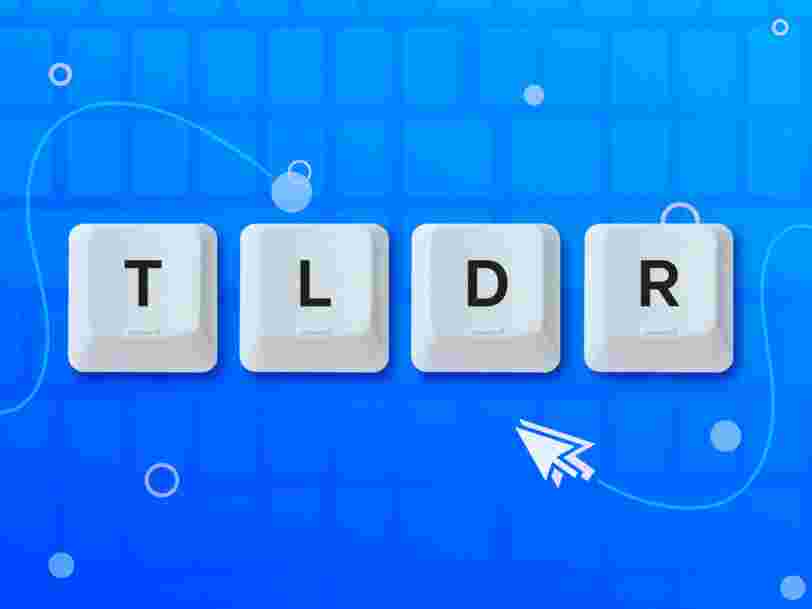What does TLDR mean? Understanding the internet shorthand for lengthy text and its various uses
Dave Johnson | Publié le | Mis à jour le
- TLDR is an acronym that stands for "Too Long Didn't Read."
- TLDR is commonly used to summarize lengthy content and can signal a sort of executive summary at the start of news articles or emails.
- The abbreviation can come off as rude, so it's best to avoid using TLDR as a response in professional settings.
If you've spent any time on online forums or in the comments sections of news websites or social media posts, you've more than likely encountered the internet shorthand "TLDR."
What TLDR means
TLDR is a common online abbreviation that stands for "Too Long Didn't Read." If that sounds a little rude or passive aggressive, you're aptly sensing one of its uses; that is often the way TLDR is used in response to densely worded articles online. While TLDR is the most common usage, you may also see the semicolon inserted in the acronym, as in: "TL;DR."
Like most memes and acronyms, the origins of TLDR are murky, though the Merriam-Webster dictionary cites the first known use to be in 2002. The meaning of the acronym is pretty obvious, however, and can generally be taken at face value - it's a fast way to say that the referenced article, post, or message is so long that it wasn't worth the full read.
When to use TLDR in a business setting
TLDR is an informal acronym and as such, you should be very careful using it professionally; consider your audience and its comfort level with internet slang. A good rule of thumb is that you would not use "TLDR" anywhere in which you wouldn't feel comfortable writing "LOL" (laughing out loud) or a similarly informal acronym.
There's probably no scenario in which you should respond to professional messages with "TLDR." As mentioned, this is easily perceived as sarcastic, rude, and unprofessional.
Even so, it can be appropriate to use TLDR within your communication to signal your own summary. For example, you could place a heading called "TLDR" at the top of a lengthy email and follow it with a bulleted list that summarizes your main points.
Or, if you are adding a link to a third-party article, you could parenthetically add TLDR with a short summary, such as "Please see this article (TLDR: It's a summary of how APIs work)."
Regardless, it's best to err on the side of caution if you have any concern that the use of TLDR is too informal for your audience.
Via PakApNews